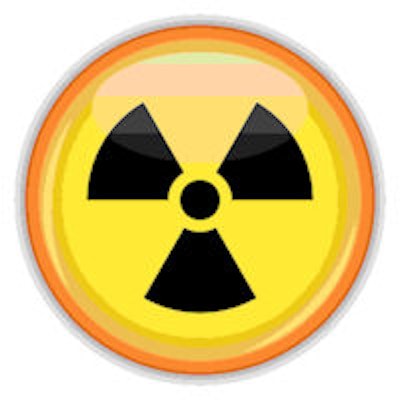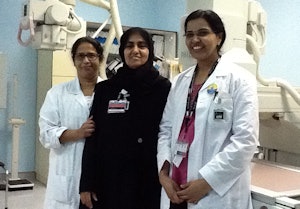
New research from Dubai, United Arab Emirates (UAE), reveals how the region is targeting ever-optimized dosage in imaging and how dose awareness is becoming of greater importance within the radiological community.
Lead author and chair of the Dubai Health Authority (DHA) Radiation Protection Committee, Dr. Jamila Al Suwaidi, believes that this latest study will contribute to establishing UAE diagnostic reference levels (DRLs) and will highlight dose safety.
"This DHA study, and those presented jointly between DHA and other healthcare organizations in the UAE, are the first published papers on patient dosimetry from the UAE, and are therefore particularly significant for the region," she told AuntMinnieEurope.com. "Monitoring patient radiation doses and auditing the level of radiation exposure is an effective approach for maintaining patient radiation safety and also important for implementing the optimization principle of radiation protection."
 Education on "dose creep" and an accurate national dose registry will support efforts to ensure patient radiation safety, according to Dr. Jamila Al Suwaidi (middle of photo), who is shown here with two senior radiographer colleagues.
Education on "dose creep" and an accurate national dose registry will support efforts to ensure patient radiation safety, according to Dr. Jamila Al Suwaidi (middle of photo), who is shown here with two senior radiographer colleagues.The article highlights several key points. First, DHA dose levels compare favorably with those published in the literature, and are lower than those for adult patient doses in general digital practice. Furthermore, pediatric entrance surface dose results in this study are within the same range as those mentioned previously by the International Commission on Radiological Protection (ICRP). The literature indicates large variations in pediatric DRLs, and there is no standardization in quoting these values. The authors were not able to obtain adequate data for the 10- to 15-year age group, mainly because the pediatric age group used by DHA is up to 13 years (Annals of the ICRP, 12 March 2015).
In DHA mammography, results were lower than those reported in Europe, and the range of dose levels among different breast thicknesses also show lower variations. However, the results for one of the hospitals did not show the expected increase in dose level with increasing breast thickness. The phantom results of this hospital showed a large degree of variation.
Results for dosimetric monitoring of DHA interventional procedures are limited, but monitoring will continue, Al Suwaidi noted.
The research team aims to continue to collect further data on patient dose, and emphasizes the need for this in order to obtain significant population samples for adult and pediatric patient groups.
"Standardization of automated dose evaluation by manufacturers is required, and this will help to improve patient radiation safety. Automated DICOM dose extraction techniques are essential for handling large samples of patient dosimetric data," she said. "However, a lack of qualified experts and medical physicists in the region hinders progress in research work related to patient radiation dosimetry and safety."
This latest project on patient dosimetry and safety was conducted by the DHA in cooperation with the International Atomic Energy Agency (IAEA) and the Sheikh Hamdan Bin Rashid Al Maktoum award for Medical Sciences. Beyond this, the process of patient radiation measurement, recording, and monitoring is ongoing at a number of hospitals across the UAE as part of a national project in cooperation with the IAEA.
"Dose monitoring is a subject that Dubai/UAE radiologists and the government take very seriously, but effort is still needed at national and regional levels," Al Suwaidicommented. "The increase of medical imaging examinations in our hospitals -- similar to the increase worldwide -- is prompting us to consider patient safety. Medical radiation exposure is considered the largest (95%) of man-made radiation. Evidence published by researchers in international periodicals has shown increase of cancer and tumors that are attributed to an excess use of radiation in medical imaging."
To avoid overexposure and "dose creep" in digital radiology, she believes that patient radiation safety must continue to be prioritized through educational programs and team instruction.
"There needs to be guidance on simple methods for patient dose evaluation, emphasis on dose recording within patients' medical reports, and a uniform, accurate, and calibrated dose registry at local and national levels," Al Suwaidi concluded.




















